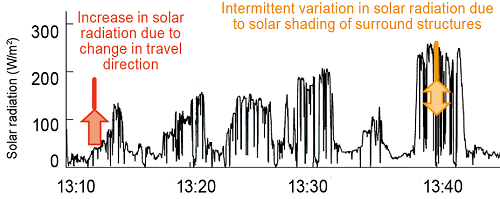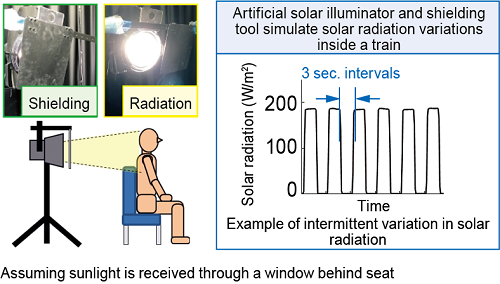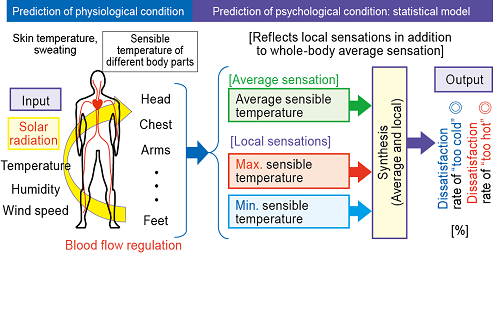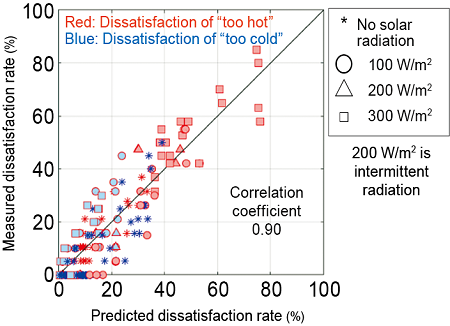21. Method of evaluating thermal comfort of solar radiation environments in commuter trains
Passengers often express their opinions about the thermal environment inside commuter trains, claiming they are too hot, or too cold.
A variety of factors affect thermal comfort in trains, including air temperature, humidity, air velocity, and solar radiation. One of these, solar radiation, which varies significantly with the position and direction of the running train (Fig. 1), has a big impact on passenger thermal comfort, but up to now it has not been possible to quantitatively evaluate thermal comfort in a way that takes this factor into account.
To understand the physiological and psychological effects of this factor, we conducted an experiment with participants by simulating a solar radiation environment inside a train (Fig. 2).
Based on our findings, we then proposed a method for evaluating thermal comfort that takes the effects of solar radiation into account (Fig. 3).
Using solar radiation, air velocity, and other parameters that define the thermal environment inside the train as inputs, the proposed method uses a thermos physiological model with an integrated thermoregulatory function to calculate the sensible temperature of each body part, thereby reflecting the physiological state of a passenger.
Next, the average, maximum, and minimum sensible temperatures of the whole body and a statistical model based on a past experimental data with participants were used to predict the proportion of passengers that feel unsatisfied with a particular thermal environment (“dissatisfaction rate”).
Since the model takes into account both local bodily sensations and the average sensation over the whole body, it can be applied to complex environments in which a part of the body is exposed to solar radiation.
The coefficient of correlation between the predicted and measured dissatisfaction rates was 0.90, confirming that the method is sufficiently reproducible (Fig. 4).
The proposed method can be used to make a variety of quantitative evaluations from the thermal comfort point of view, for example to assess the effectiveness of measures such as improving air conditioning control and reducing solar transmittance through windows, or to examine the influence of opening windows for ventilation.




